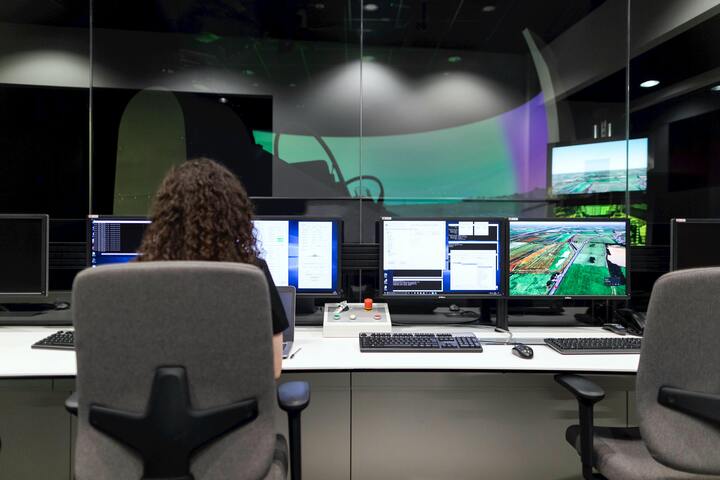As technology continues to advance at an unprecedented pace, the landscape of automated testing undergoes continuous transformation. In the year 2024, we are poised to witness remarkable trends that will shape the future of testing methodologies. From the integration of cutting-edge technologies like AI and ML to the democratization of testing through no-code and low-code solutions, the automated testing domain is evolving to meet the demands of modern software development. Let's delve into the top 10 trends that are set to redefine automated testing in 2024.
1. Hyper Automation Testing:
Hyper automation revolutionizes testing by integrating AI and ML, surpassing traditional test automation. It not only automates repetitive tasks but also augments decision-making processes. This approach accelerates testing throughout the software development lifecycle, from test case generation to result analysis, ensuring comprehensive coverage while minimizing manual intervention.
2. AI-Powered QA Evolution:
Initially perceived as a novelty or a mere tool, AI has now become integral to automated testing, revolutionizing its processes. It enhances efficiency and precision, altering traditional approaches and empowering teams to automate procedures for optimized test asset management. AI-driven analytics algorithms, coupled with traceability, enhance automated test case design for Test-Driven Development (TDD), ensuring high coverage rates, minimal maintenance efforts, and overall code correctness.
3. No-Code/Low-Code Testing Accessibility:
Testing becomes more accessible to non-technical stakeholders with the rise of no-code and low-code development. Modern automation tools empower business analysts and subject matter experts to design and execute tests without extensive coding expertise, fostering collaboration between business and development teams.
4. Scriptless Automation Testing:
Scriptless automation testing eliminates the need for testers to write scripts or code, offering a graphical interface or predefined actions to automate test cases. This approach streamlines the testing process, particularly for testers with limited coding experience.
5. Emergence of Self-Repairing Tools:
Self-repairing tools in automated testing enable testers to anticipate and rectify errors before they manifest. These machine learning tools progressively enhance their intelligence with experience, leading to more robust and stable tests. By analyzing vast amounts of data within DevOps pipelines, these tools distill actionable insights, aiding stakeholders in informed decision-making. This refinement improves testing pipelines, making them leaner, faster, and more intelligent.

6. IoT Testing Advancements:
With IoT's ubiquitous presence, a comprehensive testing strategy has become paramount, ensuring consistent data integrity, seamless connectivity, and user experience across diverse devices and scenarios. This trend gains traction in 2024 as testers grapple with evolving challenges posed by IoT technologies.
7. Blockchain Verification:
Blockchain testing involves validating the interconnected ledger system for security and reliability. It extends beyond security assessments to evaluate load capacity and scalability. As various industries integrate blockchain technology, ensuring the performance reliability of blockchain applications becomes imperative. Frequent testing of decentralized systems is essential to uphold their integrity and security, encompassing the examination of mechanisms, smart contracts, and data immutability.
8. Headless Browser Testing:
Headless browser testing evaluates web applications without a graphical user interface, facilitating efficient testing across different devices and browsers. As web apps play an increasingly pivotal role in online and business activities, monitoring this trend proves beneficial for automation testers in 2024.
9. Geolocation Compatibility Testing:
In a rapidly evolving software landscape, ensuring global compatibility of applications is crucial. Geolocation testing verifies the effectiveness of applications across different time zones and languages, addressing challenges and errors encountered by users worldwide.
10. Shift Left Testing:
Shift-left testing aims to identify errors at earlier stages of development, enhancing bug detection efficiency and reducing time and cost burdens for testers and developers. By detecting defects early in the software development lifecycle, testers can rectify them more easily and economically, mitigating the risk of costly fixes later on.
In conclusion, the year 2024 promises to be a groundbreaking period for automated testing, marked by innovation, efficiency, and adaptability. From the integration of AI and ML for hyper-automation to the accessibility of testing through no-code and low-code solutions, testers and developers are equipped with an array of tools and methodologies to streamline processes and enhance product quality. As we embrace these trends, we pave the way for a future where testing is not just a phase but an integral part of the development lifecycle, ensuring the delivery of robust, reliable, and user-centric software solutions.









